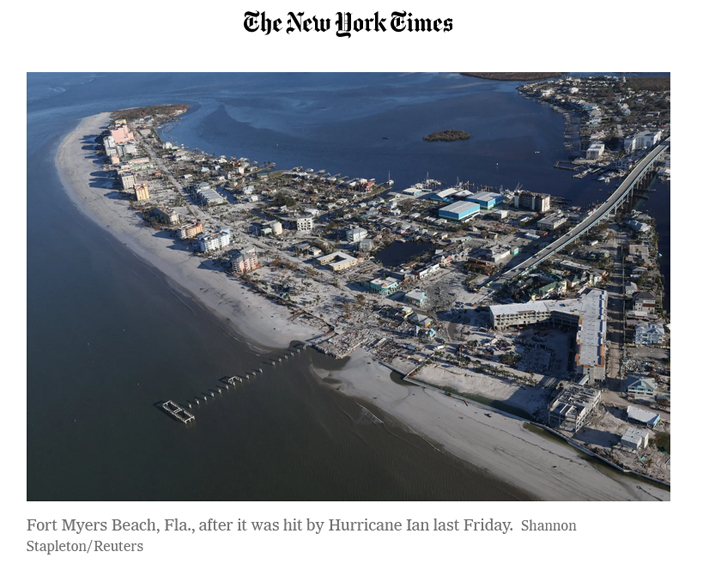A paper in the New York Times by CCMS Advisory Committee member Prof. Robert Young (Director of the Program for the Study of Developed Shorelines, Western Carolina University, USA)

Hurricane Ian is the latest devastating hurricane to confirm that coastal areas are failing to keep rebuilt or new development out of highly vulnerable areas. Local emergency managers know all too well which places in their communities should not be built back after a storm. But they are rebuilt, because the federal government and states provide multiple incentives to rebuild rather than to relocate. The assumption is that taxpayers will always be there to back up private investment after even predictable natural hazards.
“The money for such rebuilding comes largely through the public assistance sections of the 1988 Stafford Act. This legislation created the federal system of emergency response” says Prof. Young. Outside of disaster aid, billions of dollars a year are spent by the federal government on resilience projects. Most of the funded projects are designed to protect existing infrastructure, in most cases with no demands for the recipients to improve long-term planning for disasters or to change patterns of future flood plain development. In addition, federal and state taxpayers have spent billions of dollars over the past four decades pumping up beaches in front of coastal properties in what are known as beach nourishment projects. However, studies in Florida have shown that these beach projects increase oceanfront development.
"I frequently speak to community groups that ask me what the first step should be for adapting to sea level rise and storm impacts. My answer is simple. The easiest way to limit damage and loss of life is not to create vulnerabilities”, says Prof. Young.
Hurricane Ian is a chance to change that calculus in Florida and for the federal, state and local governments to come together to rebuild infrastructure in a way that will reduce future vulnerability and limit taxpayer exposure.
“We should walk away from the most vulnerable areas of our oceanfront and spend the money saved on buttressing the more sustainable parts of the community. We should be demanding this approach in the allocation of federal funds. This is not about abandoning the coastal economy. This is how we preserve it” concludes Prof. Young.
Read the full paper here: https://www.nytimes.com
